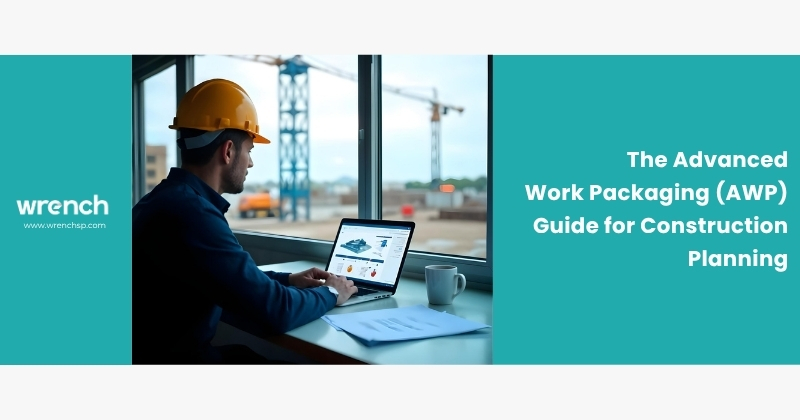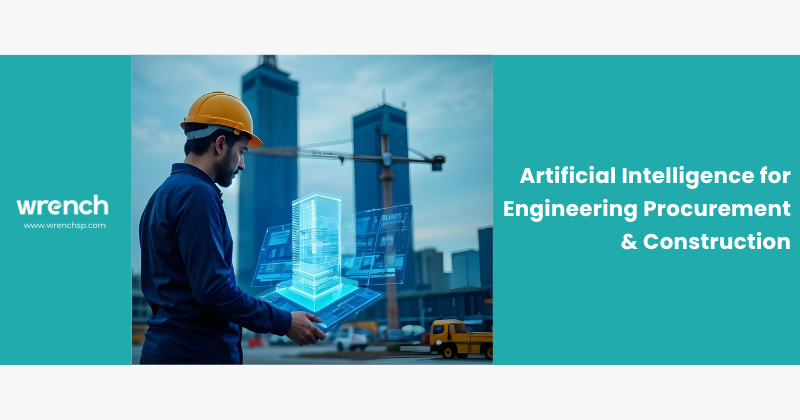- Blog Construction Project Management Software EDMS
- 08 Jul 2025
The Advanced Work Packaging (AWP) Guide for Construction Planning

In a previous post we talked about the advantages modern construction-driven project management offers over traditional sequential methods where you start from the beginning and progress towards the end. By contrast advanced work packaging or AWP-driven methods aka construction-driven planning, provides a more realistic approach. You can think of it like this: traditional methods are reactive, AWP is proactive. Traditional methods start from the beginning and keep moving in sequence to the end. AWP works backwards from the end goal. Keeping in mind the on-the-ground reality of EPC projects, it’s easy to see how AWP offers a more structured and integrated and above all practical approach.
That said, it has a weak point and that is implementation.
Engineering and other departments within the organisation tend to work in their own individual silos and traditional project management software reflected that. And so AWPs are not very easily or efficiently implemented in the real world . But today’s digital project management solutions resolve this problem and leverage all their benefits without their bottlenecks. Both start with the end in mind and work backwards from there and this allows you to plan realistically and optimally. For example if you knew how to align your engineering deliverables with your path of construction or PoC you would have one single goal with no conflicted or misaligned priorities ie construction priorities automatically become engineering and procurement priorities and vice versa. So everybody’s on the same team and playing for the same stakes. And today it’s more than a nice-sounding theory because we now have solutions that operate in the cloud, making integrated project execution possible.
So why isn’t everyone adopting AWPs (and the software that enable them) as the default?
Because, as with most things in construction project management and delivery, theory and practice don’t always align. On paper AWP-driven construction is a logical and elegant solution but in real life there are obstacles that get in the way including the siloed nature of project information management and the difficulty of implementing processes across teams, especially in small or midrange projects. Then there’s the perceived and actual costs involved, not to mention (valid) concerns about implementation and transition timelines and how shifting to new methods would affect productivity and efficiency.
Let’s take one of the most often-heard objections – it’s too expensive.
Up until recently ie a few years ago there was some truth to this because most AWP-enabling software solutions were just not practical for small or medium projects, both in pricing and in implementation strategy, being more of enterprise-calibre solutions for large EPC organisations. But that has changed. Today’s solutions, take for example modern EDMS and PMIS software, are designed to cater to every type and size of project and project organisation; they’re highly flexible, scalable, and customizable and even though in today’s fast-paced world it’s only natural that concerns about time of implementation persist, again, its not that difficult to find software solutions that have addressed this quite effectively.
There are also technical and industry-specific concerns.
Consider: most project documentation, even today, is paper-based. Even with AWP there could be a concern that the project will continue to be paper-driven and that, added to the frustrations and teething troubles inevitable with any shift in methodology makes the prospect of switching daunting. Or consider how in some geographies quality and compliance is becoming increasingly challenging, especially post pandemic, and with the evolution of new work paradigms like work from home, the gig economy, etc., existing problems like the lack of skilled manpower (which might have led to the ultra-siloed processes in the first place) get exacerbated.
There’s also the matter of multiple software applications the company has already invested in and become accustomed to, some of which might even be proprietary or home-grown. Understanding how all these systems would work together across project phases, teams, stakeholders, and technology platforms is no easy task and the ROI is not always clear especially when you factor in how deeply data-driven projects are.
But all that said, why is it still so hard to find the right solution in the age of digital and cloud technologies? Shouldn’t the software solutions of today be able to customize themselves right off the bat to different types of projects and verticals?
It’s a bit more complicated than that, because AWP is not the same as traditional project management, in fact it turns traditional project management on its head. That’s why traditional project management solutions won’t do the job, you have to find one that is designed with AWPs in mind.
In conclusion, there are many affordable solutions out there that will help you leverage AWP in a way that meets your requirements. As long as you avoid the one-size-fits-all kind, which are probably better suited to large capital projects, and invest the time to finding a software solutions partner who understands you needs and your industry, you are likely to find a solution that is well worth the effort of evaluating and implementing.
Shabna has over 7+ years of experience in the construction project management sector, having worked with leading consultancies like AECOM, Colliers, and CBRE. She is a Civil Engineer with a Master’s degree in Building Engineering and Management from SPA, New Delhi, and has a deep understanding of project management processes with a focus on project controls and presentation.
Related Posts

How to Prevent Delay in EPC Projects
How to prevent delay in EPC projects Why Projects Get Delayed Delay in EPC projects is a problem that plagues the industry and leads to millions of dollars in losses every year. Here we break…
- 10 Sep 2025

Artificial Intelligence for Engineering Procurement & Construction
Artificial Intelligence for Engineering Procurement & Construction Artificial Intelligence or AI means using machines to help us work faster and better. AI leverages sophisticated software algorithms ‘trained’ over time to analyse huge amounts of data…
- 30 Jul 2025
Archives
- September 2025
- July 2025
- June 2025
- April 2025
- March 2025
- February 2025
- January 2025
- November 2024
- October 2024
- September 2024
- August 2024
- July 2024
- June 2024
- May 2024
- April 2024
- March 2024
- January 2024
- December 2023
- November 2023
- September 2023
- August 2023
- July 2023
- June 2023
- May 2023
- April 2023
- March 2023
- February 2023
- January 2023
- December 2022
- November 2022
- September 2022
- June 2022
- May 2022
- April 2022
- March 2022
- January 2022
- November 2021
- October 2021
- July 2021
- June 2021
- May 2021
- March 2021
- February 2021
- January 2021
- December 2020
- November 2020
- September 2020
- August 2020
- June 2020
- April 2020
- March 2020
- February 2020
- January 2020
- November 2019
- October 2019
- September 2019
- August 2019
- April 2019
- March 2019
- December 2018
- October 2018
- September 2018
- August 2018
- July 2018
- June 2018
- May 2018
- April 2018
- January 2018
- November 2017
- October 2017
- September 2017
- May 2017
- April 2017
- March 2017
- February 2017
- January 2017
